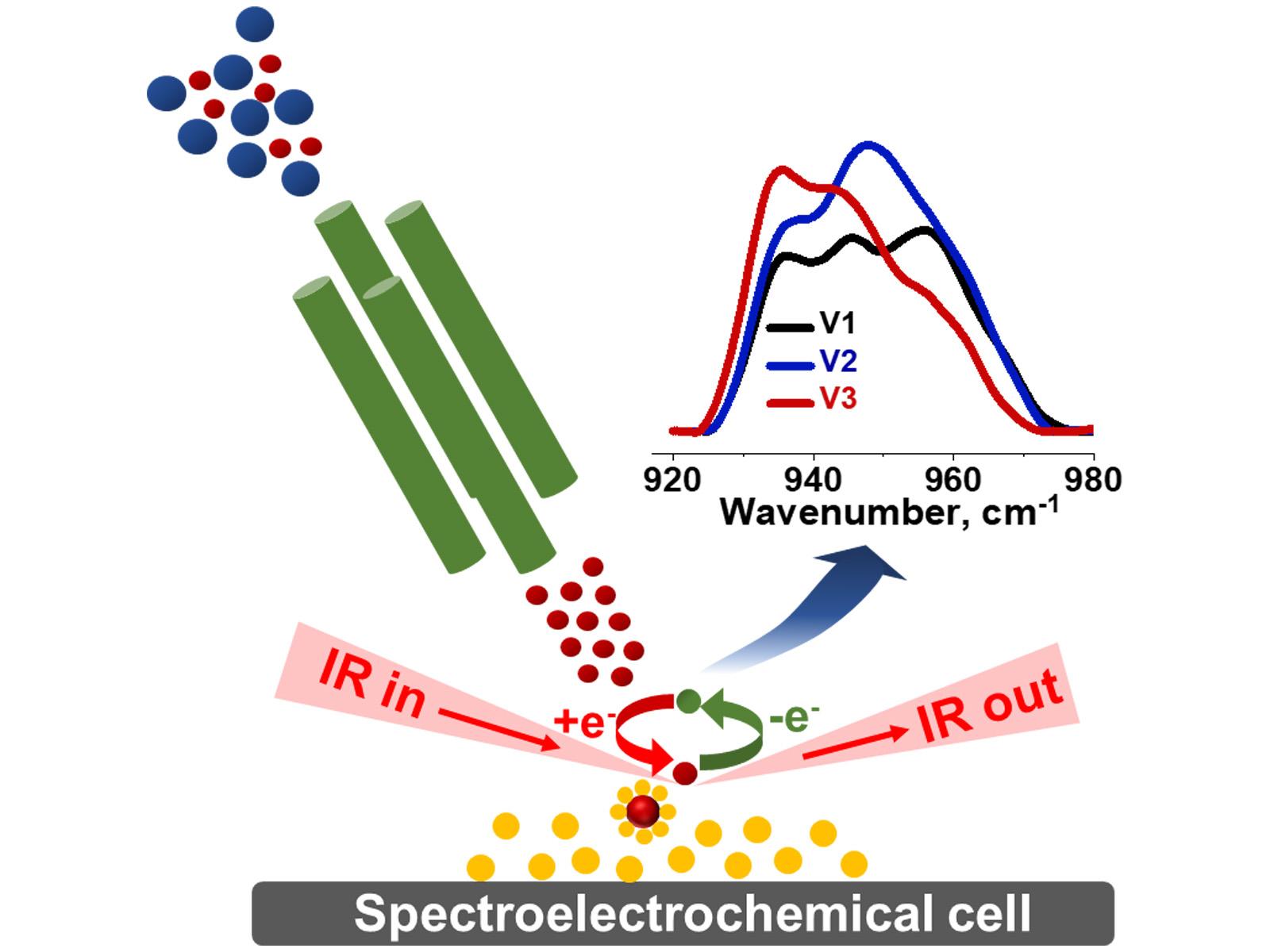Unlocking a Molecular Understanding of Separations, Energy Storage, and Electrocatalysis through Ion Soft Landing
A new review describes the insights that may be gained into important electrochemical processes using ion soft landing

Researchers construct a rich picture of electrochemical interfaces by integrating ion soft landing with analytical techniques.
(Image by Venky Prabhakaran | Pacific Northwest National Laboratory)
The Science
Understanding how electrochemically active ions and clusters reorganize and react at electrode–electrolyte interfaces (EEIs) under electric fields is central to advancing efficient green technologies needed for chemical separations, catalysis, energy conversion, energy storage, and reduced power microelectronics. The chemical and physical complexity of EEIs has generally prevented researchers from obtaining a clear understanding of interfacial processes using established analytical techniques. Ion soft landing addresses this challenge by enabling the assembly of custom interfaces with atomically precise control over the molecular building blocks. This unique capability provides an unprecedented opportunity to investigate the chemical and structural transformations of selected ions at well-defined interfaces suitable for detailed experimental characterization and high-level theoretical modeling.
The Impact
Developing high-performance and sustainable electrochemical technologies for a wide range of energy-related applications depends on a molecular-level understanding of processes occurring at EEIs. Ion soft landing allows researchers to populate EEIs with precisely defined electroactive species, enabling detailed studies of electron transfer processes within deposited species and between species and electrodes. These highly tunable deposited surfaces constitute powerful models that may be used to provide insight into technologically relevant EEIs under operational conditions.
Summary
Researchers reviewed and provided an expert perspective on how ion soft landing may be employed to establish a predictive understanding of the effect of the charge state, stoichiometry, and composition of complex redox-active molecules on the behavior of EEIs. This work is particularly important for understanding electron transfer and electrocatalytic properties relevant to separations, catalysis, energy storage, and microelectronic applications. They highlighted pioneering research involving liquid electrochemical cells used for studying fuel cell reactions promoted by mass-selected clusters and a solid-state in-vacuum electrochemical cell for performing redox and reactive electrochemistry measurements on mass-selected ions. The review describes how the integration of vacuum-based ion soft landing instrumentation and in situ electrochemical and spectroscopic measurements enables unique interfacial studies with unprecedented atomic- and molecular-scale resolution.
Characterizing the stability, electronic properties, and reactivity of electroactive ions near EEIs addresses a critical scientific knowledge gap currently impeding the development of more efficient and sustainable technologies for energy science, sensing, and microelectronics. Integrating advanced spatiotemporally resolved spectroscopy tools with machine learning analysis will offer new opportunities to explore the highly functional coordinated structures and electron transfer properties of redox ions. This information will inform strategies for building the efficient, stable, and functional EEIs needed for electrochemical separations, energy storage, chemical conversions, and next-generation transistors and memory devices.
PNNL Contact
Venkateshkumar (Venky) Prabhakaran, Pacific Northwest National Laboratory, Venky@pnnl.gov
Grant E. Johnson, Pacific Northwest National Laboratory, Grant.Johnson@pnnl.gov
Funding
The authors acknowledge long-term support of their ion soft landing research from the Department of Energy, Office of Science, Basic Energy Sciences program, Chemical Sciences, Geosciences, and Biosciences Division. VP and GEJ acknowledge support from project 72353 (Interfacial Structure and Dynamics in Separations). Part of this work was performed at EMSL, the Environmental Molecular Sciences Laboratory, a National Scientific user facility. JL acknowledges support from the Air Force Office of Scientific Research under grant FA9550-23-1-0137.
Published: August 8, 2023
Prabhakaran V, Johnson G.E., Laskin J. 2023. “Ion soft landing: A unique tool for understanding electrochemical processes,” Current Opinion in Electrochemistry, 40, 101310. [DOI: 10.1016/j.coelec.2023.101310]